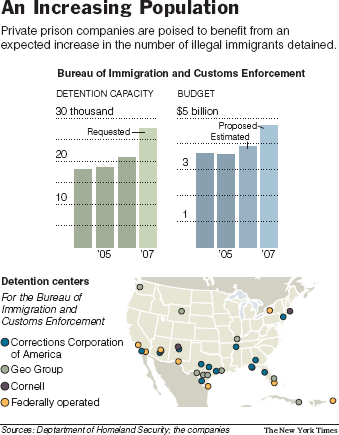I originally posted this over at the midwest pages to prisoners blog.

I came across this article today that describes the surprisingly prevalent practice of shackling incarcerated women while they are in labor. Apparently, only Illinois and California have laws expressly prohibiting this practice. Other states have formal policies banning the practice, and some others claim to have informal policies. The article states that “Many states justify restraints because the prisoners remain escape risks, though there have apparently been no instances of escape attempts by women in labor.”
The article also provides some statistics about the number of pregnant women who are incarcerated:
About 5 percent of female prisoners arrive pregnant, according to a 1999 report by the Justice Department. The Sentencing Project, a research and advocacy group, estimates that 40,000 women are admitted to the nation’s prisons each year, suggesting that 2,000 babies are born to American prisoners annually.
Finally, a quote by one nurse gives a distressing picture of incarcerated childbirth:
“Here this young woman was in active labor,” Ms. Simpson wrote, “handcuffed to the armed guard, wearing shackles, in her orange outfit that was dripping wet with amniotic fluid. Her age: 15!”
Link
Update:
I asked my friend Tess, who is studying social work at Indiana University and is doing her practicum at the Indiana Womens Prison (IWP) up in Indianapolis about incarcerated mothers in Indiana, and this is what she had to say:
i am not too in-tune with a lot of specifics at IWP, but i have done a lot of research on the subject. every pregnant woman that is sentenced to prison in indiana stays at IWP. we have a great family preservation program, including an RN, casemanager and a social worker. the RN, Ms. Jura Finn, has a pre-natal group that meets once or twice a week. in that group, they eat healthy food and talk about parenting issues. the family preservation staff also help the women set up placement for the child until she is released from prison. when they go into labor, pregnant offenders give birth at wishard hospital in indianapolis, without shackles or handcuffs. guards are in the hospital, as well. the father or the child or the offender’s mother is allowed to be present in the room, too. i am unsure how long they get to stay with the baby…
overall, i was under the impression that amnesty international’s expose in the late 90s about women being forced to give birth in shackles had kinda ended the practice. it’s unfortunate that it still happens. also, if arkansas only has about 50 incarcerated women giving birth a year, it doesn’t surprise me; they don’t have enough experience with pregnant women. i was glad to read that certain nurses are putting their feet down with guards. it would never happen in indiana, b/c indiana does not think that women can committ offenses that warrant maximum security precautions (under revamped legislation from mitch daniels). i am really interested in prison nurseries and residential programs for incarcerated women and their infants. there are only three prison nurseries in existence right now: 2 in new york (one being the bedford hills correctional facility which has been around since 1901!) and another in nebraska. short-term studies have found that these programs really are effective in reducing recidivism, but not enough research has been done. a lot of programs that exist to keep the new mother and new child together put a lot of emphasis on breaking cycles of incarceration and forming healthy bonds of attachment. programs called MINT (mothers and infants nursing together) in california, MILK (mothers inside loving kids) in virginia, WIAR (women and infants at risk) in michigan. if yr mother gave birth to you in prison, you have a greater chance of doing time later in life (that’s true of any child with an incarecerated parent). also, the bonds of attachment that form right after a child is born are so important to typical development. if you do not have a care-giver to attach to, it could cause emotional and behavior challenges throughout yr entire life. wow.





